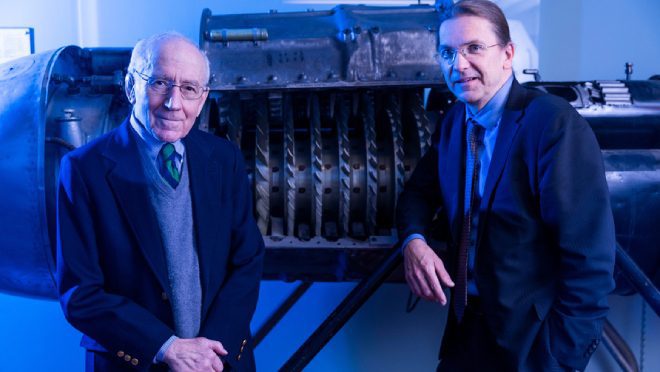The Massachusetts Institute of Technology’s Gas Turbine Laboratory, GTL, has prepared to move its next-generation aircraft into the future after 75 years of aviation industry-focused research and education.
In 1941, the National Academy of Sciences established a committee to examine the application of gas turbine engines in aviation, which generate thrust through heat emitted during fuel combustion.
GTL Journey Genesis
The panel of luminaries concluded that gas turbines had little potential for use in aircraft propulsion due to the temperature constraints of available materials. However, unknown to the committee, the first jet engine was already successfully run in Germany in 1940: the Junkers Jumo, which was led by Professor Zoltán Spakovszky, director of the MIT Gas Turbine Laboratory (GTL) and the T.A. Wilson Professor in Aeronautics and Astronautics.

The Junkers Jumo, the world’s first turbojet engine in production, was put in operation during World War II, while separately, Sir Frank Whittle had been leading progress on developing the turbojet engine in Great Britain. With the United States falling behind Germany and Britain in developing turbojet engines, Professor Jerome C. Hunsaker envisioned establishing a laboratory dedicated to gas turbine propulsion at MIT.
Developing Next-generation Aircraft
To get started, Hunsaker, an aviation pioneer in his own right and a member of the National Advisory Committee of Aeronautics, secured funding and assistance from six American businesses and the U.S. Navy.
With all of the leading American aviation and aircraft industries present at the inaugural ceremony, the GTL was officially founded on October 7, 1947, under the direction of Professor Edward Story Taylor, who served as its founding director. The GTL, which is currently a part of the Department of Aeronautics and Astronautics, has been at the forefront of practical research for 75 years.
“New perspectives on the integration of propulsion systems with new aircraft concepts and high-impact collaborative projects cutting across disciplines,” Spakovszky says.
To describe the laboratory’s work, Professor Edward Greitzer, a former GTL director and the H.N. Slater Professor in Aeronautics and Astronautics, quotes former prime minister of Singapore Lee Kuan Yew, who spoke of not “perfecting the known” but rather reaching for the unknown.
The GTL “is still going very strong, tackling new and different challenges,” Spakovszky says.
“Today, we’re not only working on the propulsion system, jet engines, and power plants, we’re also working on integrating jet engines into aircraft and on forward-looking challenges like electrification of aviation.”
Greitzer notes that early initiatives were discipline-specific and dealt with a single problem. However, modern GTL works on problems with broader scope and scale, spanning across disciplines and occasionally companies. For instance, a NASA facility conducted a test in a sizable wind tunnel as part of a study developing a conceptual design for a fuel-efficient airplane.
Spakovszky adds, is the lab’s focus on industry. According to him, staying true to its founding principles, the GTL is still engaged in initiatives that don’t just go into theses and lie on the shelf; they move the needle and start with actual applications in the industry.
Examples of the numerous various industry-focused projects that the GTL has worked on include super-high-pressure ratio compressors for carbon sequestration and ultrashort aero-engine inlets to decrease fuel use.
GTL’s Success After 75 Years
On October 7, 2022, exactly 75 years later, Spakovszky addressed a room packed with over 140 alumni, business leaders, and intellectual luminaries who had gathered on campus to commemorate the GTL’s historic turning point. Among the former lab members present were Kiss, Sirakov, Mullan, and his grandson, an engineer with Pratt & Whitney.
“The challenges are different now compared to 75 years ago, but the way we do research and the way we collaborate has not changed. Today, we’re looking at electrifying aviation and working with new fuels like hydrogen,” Spakovszky says. “The bottom line is that our name has not changed, we’re still the Gas Turbine Lab, but we’re doing more than gas turbines, and addressing different aspects of the field.”
While 2022 was a significant turning point in the GTL’s history, Sirakov is confident that the facility will remain at the forefront of innovation.
“I was very happy to see so many new test rigs and experimental projects going on,” he says. “I am proud of the long history of the lab, the long list of contributions to the field, and the powerful beginning with all the aerospace leaders attending the [launch]. Remarkably, after so many years the MIT GTL lab is still very relevant to the fields of aeronautics, space, and automotive [research] and all of the new and exciting horizons like electrification and clean energy.”




